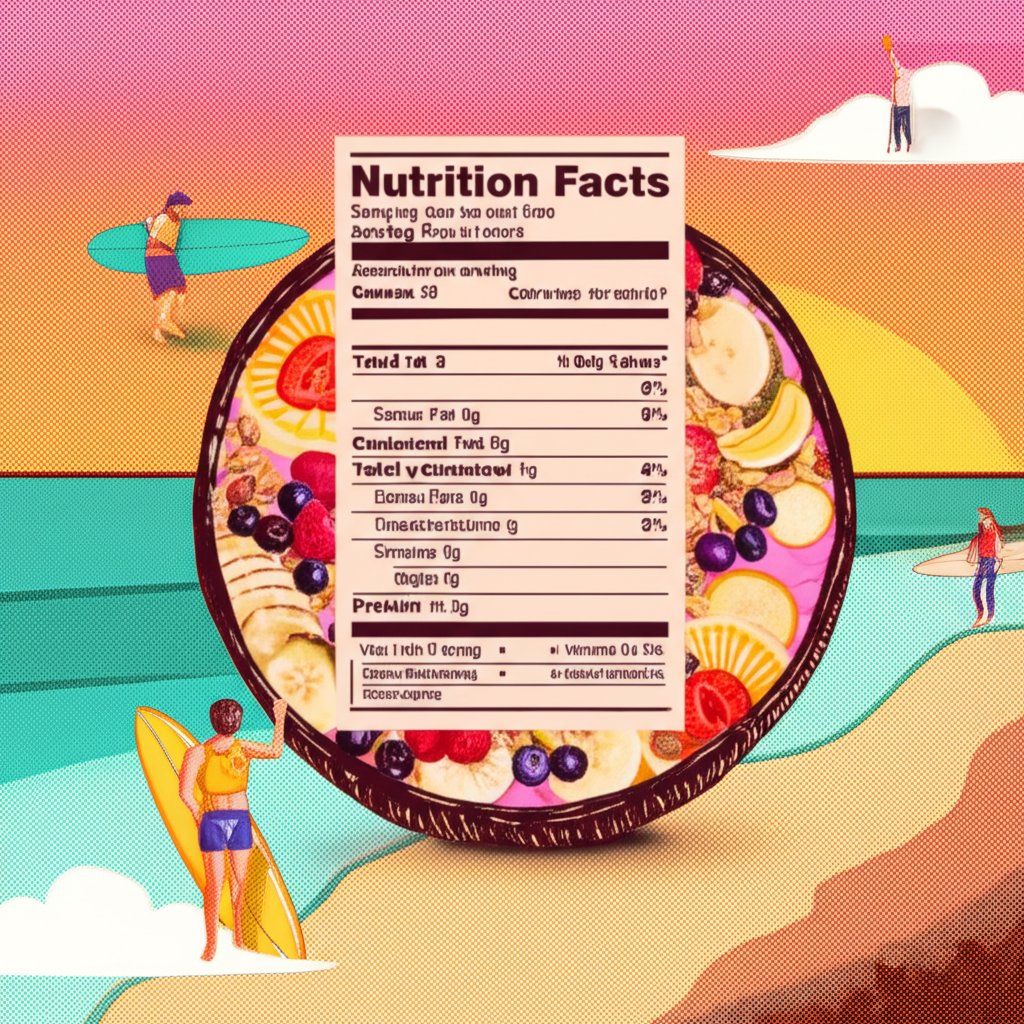That slice of pecan pie looks (and smells!) irresistible, doesn’t it? But before you indulge, you might be wondering about the pecan pie nutrition facts. Is it a decadent treat best reserved for special occasions, or can it fit into a balanced diet? Let’s dive into the details and uncover what a typical slice of pecan pie contains.
At a Glance:
- A standard slice (1/8 of a 9-inch pie) contains around 450-500 calories.
- It’s high in fat, carbohydrates, and sugar.
- Pecan pie offers some fiber and minerals, but these are overshadowed by the calorie density.
- Homemade versions can offer more control over ingredients and nutritional content.
The Anatomy of a Pecan Pie: Breaking Down the Ingredients
Pecan pie’s deliciousness stems from a few key ingredients: pecans, butter, sugar (often corn syrup and brown sugar), eggs, and vanilla extract, all nestled in a flaky crust. Each component contributes to the overall nutritional profile. Understanding these components is key to understanding pecan pie nutrition facts.
Let’s break down one slice’s contribution when it comes to some important macronutrients.
- Fat: A significant portion of the calories comes from fat, primarily from the pecans and butter. While pecans boast healthy monounsaturated fats, the saturated fat content from butter adds less desirable fats.
- Carbohydrates: The sweetness of pecan pie results largely from the high sugar content. The carbs primarily come from sugar and corn syrup.
- Protein: Offers a small amount of protein from the eggs and nuts.
- Fiber: Pecans contribute a bit of fiber, helping to offset some of the less desirable effects of the sugars.
Pecan Pie Nutrition Facts: The Numbers You Need to Know
Here’s an overview of the estimated nutritional content of a single slice (1/8 of a 9-inch pie), based on average values:
| Nutrient | Amount | % Daily Value* |
|---|---|---|
| Calories | 450-500 | – |
| Total Fat | 21-27g | 27-35% |
| Saturated Fat | 4-5g | 20-25% |
| Cholesterol | 36-106mg | 12-35% |
| Sodium | 320-483mg | 14-21% |
| Total Carbohydrate | 64-65g | 23-24% |
| Dietary Fiber | 4g | 14% |
| Sugars | 32g | – |
| Protein | 4.5-6g | – |
| Calcium | 19-39mg | 1-3% |
| Iron | 1.19-1.8mg | 7-10% |
| Potassium | 84-162mg | 2-3% |
| * Based on a 2,000 calorie diet. | ||
| Keep in mind that these values can vary depending on the specific recipe and ingredients used. As you can see, Playa Bowl Nutritional Information might be a healthier dessert alternative due to its typically lower sugar content. |
The Good, The Bad, and The Delicious: A Balanced Perspective

Let’s face it, pecan pie isn’t exactly a health food. However, it doesn’t have to be completely off-limits either. Here’s a balanced view:
The Potential Benefits:
- Healthy Fats: Pecans are a good source of monounsaturated fats, which are beneficial for heart health.
- Fiber: As mentioned, pecans offer a small amount of fiber, which aids digestion and promotes satiety.
- Minerals: Provides small amounts of iron, potassium, and other minerals.
The Downsides: - High Calorie Count: The high calorie density can contribute to weight gain if consumed frequently or in large portions.
- High Sugar Content: The large amount of sugar can lead to blood sugar spikes and crashes, and contribute to health problems like type 2 diabetes.
- High Fat Content: The significant fat content, particularly saturated fat, can negatively impact cardiovascular health.
Decoding the Glycemic Index and Load of Pecan Pie
The Glycemic Index (GI) and Glycemic Load (GL) are important factors to consider when analyzing pecan pie nutrition facts, especially for individuals managing blood sugar levels.
- Glycemic Index (GI): The GI measures how quickly a food raises blood glucose levels on a scale of 0 to 100. Pure glucose has a GI of 100.
- Glycemic Load (GL): The GL takes into account both the GI and the amount of carbohydrate in a serving. This gives a more accurate picture of a food’s impact on blood sugar.
Pecan pie has a glycemic index of 59, which falls into the medium range. However, its glycemic load is 38, which is considered high. This means that while the carbohydrates in pecan pie are not rapidly digested, the sheer amount of carbohydrates in a typical serving can significantly raise blood sugar levels.
Comparing Pecan Pie to Other Desserts
How does pecan pie stack up against other common desserts? Let’s consider a few examples:
- Apple Pie: Typically contains fewer calories and less fat than pecan pie, but can still be high in sugar.
- Chocolate Cake: Similar in calorie and fat content to pecan pie, but with potentially more protein depending on the recipe.
- Cheesecake: Often higher in fat and calories than pecan pie, but can also be a good source of calcium.
- Polenta Cake: A good alternative to pecan pie if you’re looking for a grain-free dessert. Some recipes for Polentas Nutritional Benefits Explained are significantly lower in sugar than pecan pie.
It’s important to compare portion sizes when evaluating nutritional content.
Making Healthier Choices: Tips for Enjoying Pecan Pie in Moderation

If you love pecan pie, you don’t necessarily have to give it up entirely. Here are some ways to enjoy it in moderation:
- Smaller Portions: Opt for a smaller slice or share a slice with someone.
- Homemade Version: Making your own pie allows you to control the ingredients. Reduce the amount of sugar, use healthier fats (like coconut oil), and add more pecans for extra fiber and nutrients.
- Pair with Healthy Choices: Balance your indulgence by pairing your pecan pie with a light meal or a healthy snack.
- Special Occasions Only: Reserve pecan pie for special occasions rather than making it a regular part of your diet.
- Read the Label: If purchasing a pre-made pie, carefully read the nutrition label and compare different brands.
DIY Pecan Pie: A Recipe for a Slightly Healthier Version
Consider making your own pecan pie to control the ingredients. Here’s a modified recipe focusing on reduced sugar and healthier fats:
Ingredients:
- 1 pre-made pie crust (or homemade using whole wheat flour)
- 1 cup pecans, chopped
- 1/2 cup maple syrup (instead of corn syrup)
- 1/4 cup coconut sugar (instead of white sugar)
- 1/4 cup butter, melted (or coconut oil)
- 3 large eggs
- 1 teaspoon vanilla extract
- 1/4 teaspoon salt
Instructions:
- Preheat oven to 350°F (175°C).
- Place pie crust in a pie dish.
- In a large bowl, combine maple syrup, coconut sugar, melted butter/coconut oil, eggs, vanilla extract, and salt.
- Stir in chopped pecans.
- Pour mixture into the pie crust.
- Bake for 45-50 minutes, or until filling is set.
- Let cool completely before serving.
This recipe cuts down on refined sugars and offers a slightly healthier fat profile. It’s still a treat, but marginally better for you!
Common Questions About Pecan Pie Nutrition Facts
Here are some common questions related to pecan pie nutritional information:
Is pecan pie gluten-free?
No, traditional pecan pie is not gluten-free because it contains a wheat-based pie crust. However, you can make a gluten-free version by using a gluten-free pie crust.
Is pecan pie vegan?
No, traditional pecan pie is not vegan because it contains eggs and butter. However, vegan versions can be made using substitutes like flax eggs and plant-based butter.
Does pecan pie have any nutritional benefits?
Yes, pecans offer healthy fats, fiber, and minerals. However, these benefits are offset by the high sugar and calorie content.
How many calories are in a mini pecan pie?
The calorie count in a mini pecan pie will depend on the size, but it will generally be less than a standard slice and could make a good choice if you’re determined to moderate your calorie intake.
Can pecan pie be part of a balanced diet?
Yes, in moderation. Enjoying a small slice occasionally is unlikely to derail your overall health goals. Focus on making healthier choices most of the time and consider pecan pie a treat.
Beyond the Numbers: Mindful Indulgence
Ultimately, enjoying pecan pie comes down to mindful indulgence. Being aware of the pecan pie nutrition facts allows you to make informed decisions and enjoy it responsibly. Savor each bite, appreciate the flavors, and don’t feel guilty about treating yourself occasionally. Perhaps pair it with a lighter meal beforehand, like a salad with fruit. Instead of restricting entirely, find a balance that allows you to enjoy your favorite foods without compromising your health.
- The Best Bento Box Price For Your Perfect Packed Lunch - December 15, 2025
- Bento Box Shopping Tips for Smart and Stylish Lunch Prep - December 14, 2025
- Bento Box Trays Streamline Restaurant Meal Presentation and Transport - December 13, 2025










